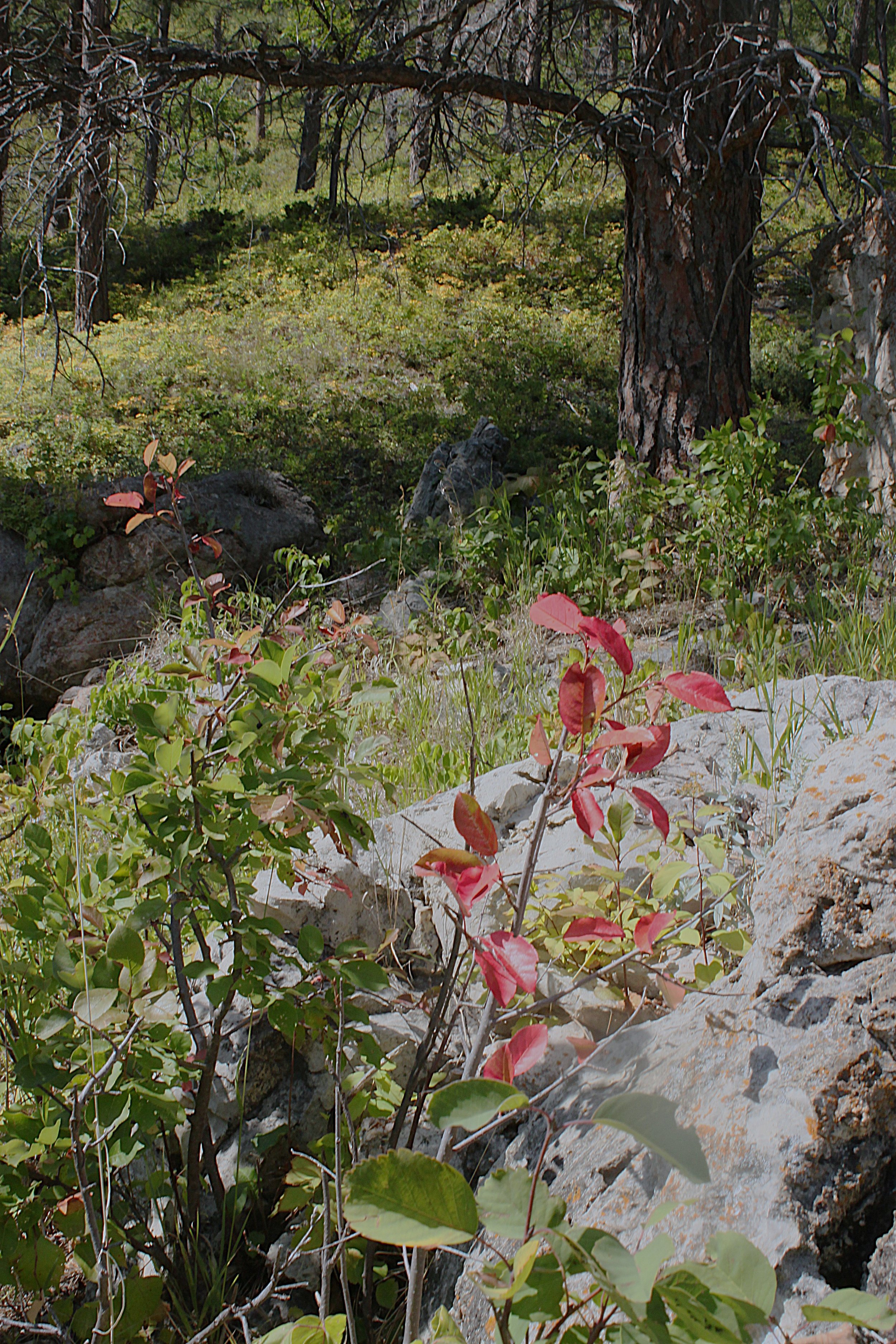September 3, 2024
Color Change: 8% (Very Low)
This is the first Spearfish Canyon Leaf Report of 2024. The Canyon foliage is at 8% towards its full autumn color change. After a hot and dry Labor Day weekend, Spearfish Canyon still looks more summer than fall. The real story is found in the “understory.”
The understory is the space between the forest treetops and the forest floor. This week in the Canyon you’ll observe yellow spreading dogbane. Watch for dogbane around Calamity Gulch. The dogbane that have morphed into their late summer golden color are especially striking up close where you can observe their beautiful red stem. I’ve noticed yellow dogbane since August. This could mean an earlier than normal color change in the Canyon, but we will have to see what September has in store. Historically, we’ve seen the “peak” or most vibrant fall colors in Spearfish Canyon between September 23 and October 3.
Also, in the Canyon understory this week look for purple-red dogwood near Long Valley Picnic Area. There are some random, early-maturing birch and aspen branches starting to turn yellow, but overall the deciduous trees are still green.
As we wait for the first signs of fall, let’s explore some Canyon landmarks I’ll be pointing you to throughout the season as special leaf watching spots.
First up, Split Rock! Split Rock is one of the first landmarks you’ll come to as you follow the Spearfish Canyon Leaf Watching Map. What’s happening above (and below!) Split Rock?
Split Rock is about 3 miles from the intersection of Colorado Blvd. and Hwy 14A as you travel into the Canyon from Spearfish. The Rock straddles both sides of the Scenic Byway. Split Rock was blasted through in the late 1800s to make way for a railroad. The triangular rock on the east side of the byway is perhaps most recognizable as the landmark for Split Rock. Pine trees almost seem to climb up Split Rock’s upward angle there. In the next few weeks you’ll see birch, oak, cottonwood, and elm all come into their splendor of fall colors near Split Rock. Today I saw purple dotted gayfeather standing tall and asters low to the ground.
While the beauty above ground will catch your eye, it’s also worth considering what is happening underground at Split Rock. The actual rock type on Split Rock is exposed limestone that is part of the Madison Aquifer, one of the most important aquifers in the Black Hills. Madison Limestone, like what we see at Split Rock, has karst features. This means the carbonate in the limestone (which was once deposited by seawater) can dissolve, leading to fractures in the rock. Within these fractures, water flows through the rock and connects with surface and groundwater resources.
In the next Leaf Report we’ll examine a favorite Canyon stop, Bridal Veil Falls.






